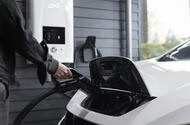Almost four in five cars used by the UK government are still running on petrol, diesel, or hybrid power. This is surprising, especially considering the government’s previous commitment to transition to a fully electric fleet by 2027. So, what’s going on here?
Recent data obtained through Freedom of Information requests reveals that only 22% of government cars are electric vehicles (EVs). The breakdown shows that 35% are diesel, another 35% are plug-in hybrids, 6% are petrol, and a mere 2% are regular hybrids. This raises some eyebrows, especially when you think about the government’s role in setting an example for the public.
The electrification rate varies significantly across different government departments. For instance, the Driver and Vehicle Licensing Agency (DVLA) boasts an impressive 88% of its fleet as EVs. In stark contrast, the Ministry of Justice has only managed to get 16% of its vehicles to go electric. This inconsistency highlights a lack of cohesive strategy in the government’s approach to transitioning its fleet.
Interestingly, while the government has been slow to adopt EVs in its own operations, it has recently imposed stricter penalties on ordinary drivers who haven’t made the switch. In the recent Spring Statement, vehicle excise duty rates for hybrid and plug-in hybrid electric vehicles (PHEVs) were increased dramatically—from £10-£30 to £110-£130, depending on CO2 emissions. This increase could be seen as a hefty penalty for drivers who are still using low-emission alternatives.
Steve Huntingford, editor of What Car?, voiced a common sentiment: “It is completely wrong that the government is not cleaning up its own fleet at the same time that it is penalising ordinary drivers for not going electric.” This sentiment resonates with many who feel that the government should lead by example, especially when it comes to environmental policies.
The push for a fully electric fleet was initially championed by a Conservative administration under Boris Johnson. The plan was to have 25% of the government car fleet as ultra-low emission by December 2022 and to achieve 100% zero emissions by 2027. This ambitious goal was set during a time when Grant Shapps served as the transport secretary, but since then, there have been significant changes in leadership and policy direction.
Now, with the current Labour government in power, it’s uncertain whether they will stick to the original plan. They’ve already reversed some of the previous administration’s policies, such as delaying the ban on new hybrid car sales from 2030 to 2035. This shift raises questions about the commitment to electrification and whether the government will continue to push for a greener fleet.
As the landscape of government policy continues to evolve, one thing is clear: the public is watching closely. The disparity between government actions and their rhetoric on climate change and electric vehicles is becoming increasingly difficult to ignore.
The big takeaway? The government’s approach to transitioning its fleet isn’t just about vehicles; it’s about setting a standard for all drivers. If they want to encourage the public to embrace electric vehicles, they need to start by cleaning up their own act. Making one change this week could lead to noticeable differences by the end of the month, both for the government and everyday drivers alike.

